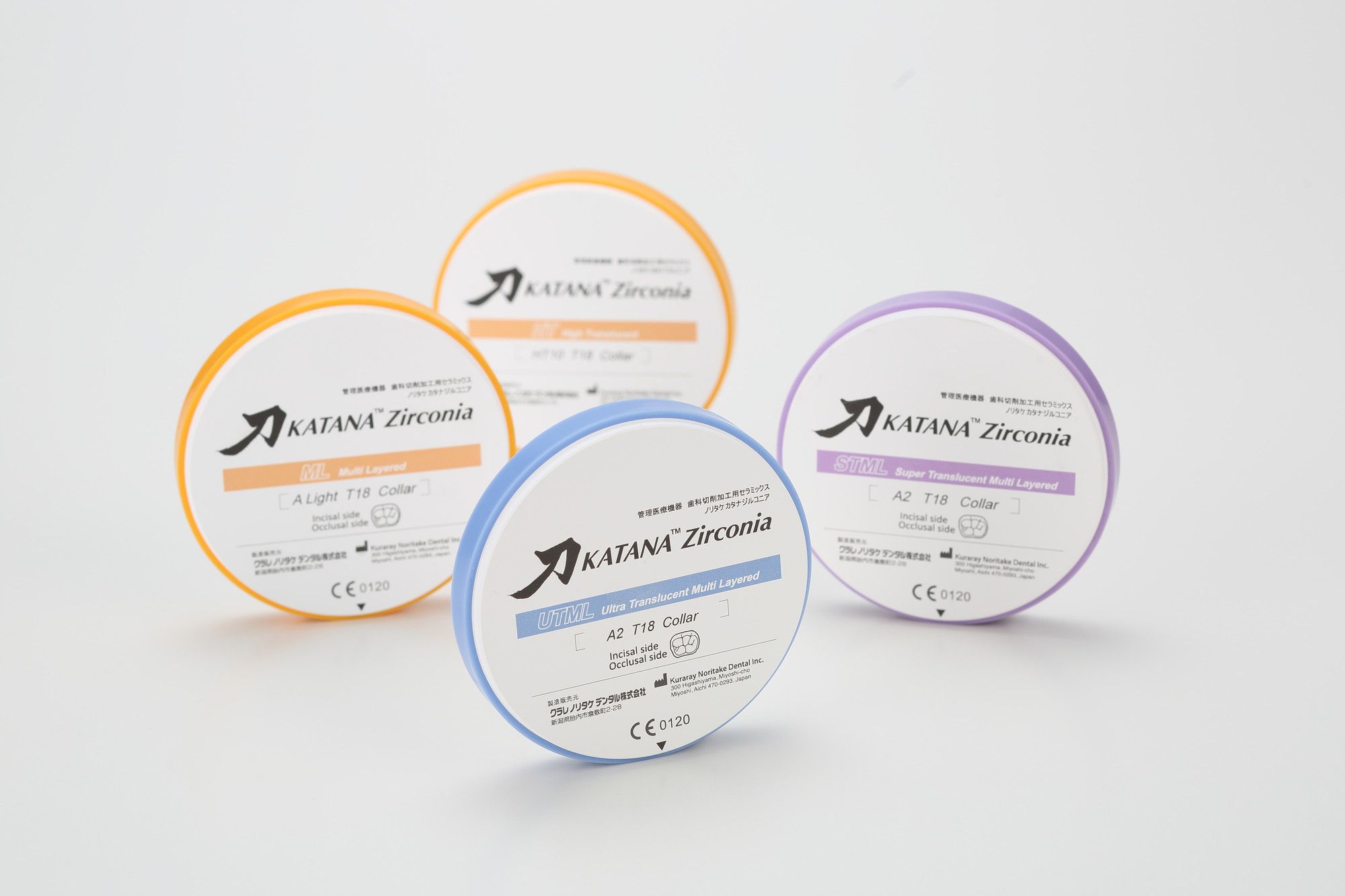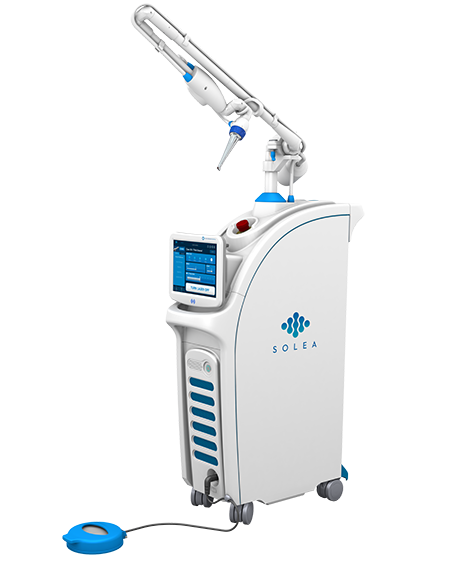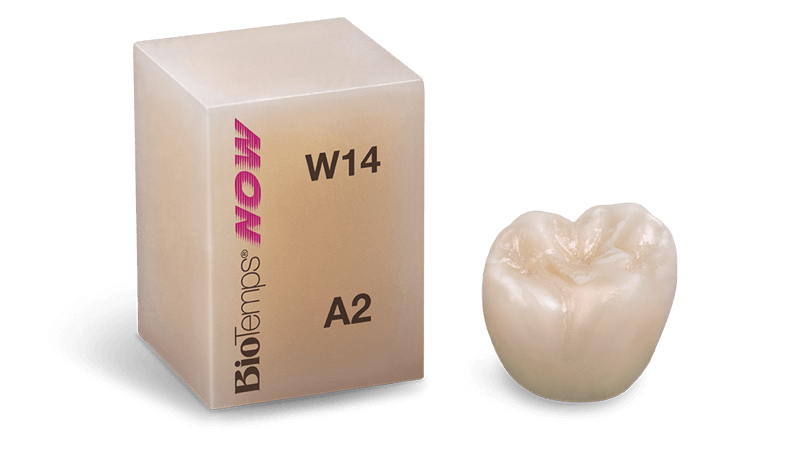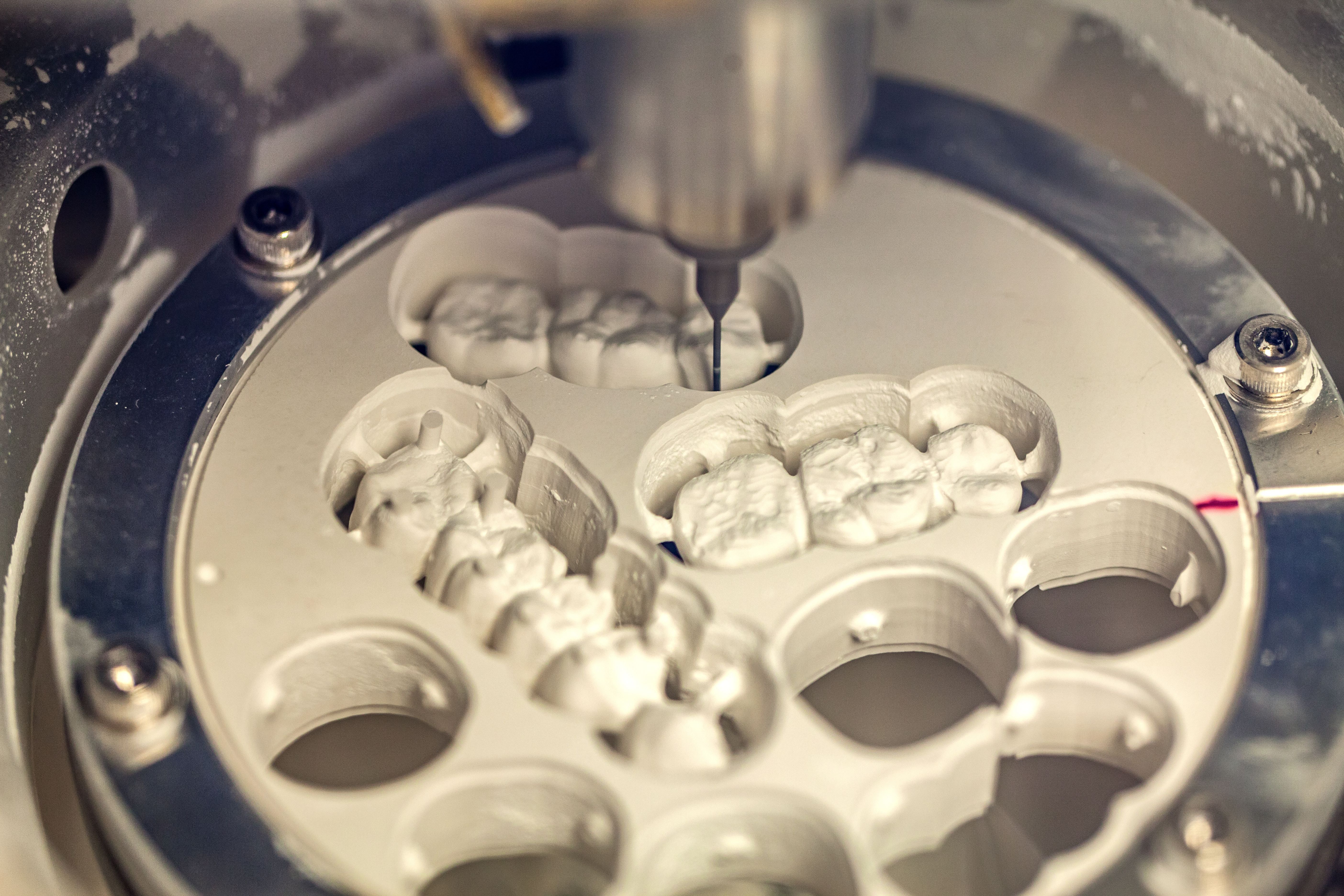Same-Day Materials: What's Possible?
Embracing the advances in materials and technology is not only crucial for the patient experience but also for the dental practice’s bottom line.
The materials for same-day dentistry have changed, and these advances are increasing the care that can be delivered in a single day. Here, we take a closer look at what materials clinicians can use for same-day dentistry, what these materials make possible, and what materials are coming soon to the industry.
Same-Day Dentistry Materials
Various materials are available for use in same-day dentistry, says Alex Kalmanovich, DDS, ABDSM, a dentist in private practice in Laguna Beach, California. These material types include glass ceramics, resin nanoceramics, zirconia, ceramic composites, ceramics, and resin composites.
Nathaniel Lawson, DMD, PhD, director of the Division of Biomaterials at the University of Alabama at Birmingham School of Dentistry, says these materials can be divided into 3 categories:
- Glass-ceramics: The original glass-based materials were not too different from porcelain but were slightly more robust. The material that revolutionized CAD/CAM is milled e.max® (Ivoclar Vivadent), which is lithium disilicate. Lithium disilicate is a strong, glass-based material with the esthetics and bondability of ceramics that can be milled and crystallized in-office. Although e.max was the first, other brands of lithium disilicate materials are now available—likely without a significant compositional change from e.max.
- Resin composites: Another class of less-used milled materials is resin composites. These are similar to direct-filling materials, meaning they contain glass or ceramic fillers within a resin matrix. Still, same-day dentistry resin composites are optimized for in-house milling. Resin composites are heat and pressure cured and then given to the CAD/CAM dentist as a milling block. This polymerization process enhances cross-linking, which improves mechanical properties. The advantage of this version of resin composites is that they are softer, making them easier to mill. Another advantage is clinicians can repair them with composite. Also, because resin composites don’t need crystallization, clinicians can make them faster. However, resin composites for same-day dentistry do not have the strength of ceramics, and the bond achieved is not as reliable.
- Zirconia: One of the more recent entries into same-day dentistry, zirconia is a polycrystalline material, which means it doesn’t have glass in it. Many everyday items—from dishes to lighting—contain zirconia.1 Unlike the fabrication method used for glass-ceramic or resin composites, zirconia is milled in a chalky form and then sintered in a furnace at a higher temperature than what’s used to crystallize lithium disilicate. It is tougher than lithium disilicate, which allows it to be cemented with conventional cement. However, zirconia does not offer the same aesthetics as lithium disilicate, and the clinical evidence is not as robust for the bond between zirconia and resin cement as it is for lithium disilicate.
“Probably the biggest advancement in milled materials that has occurred recently is the availability of in-office zirconia crowns,” Dr Lawson says. “The reason that zirconia could not be fabricated in-office previously is that it would take 8 hours to sinter in a furnace. So, the real advancement was a new furnace that could sinter zirconia in 18 to 30 minutes.”
Jeffery Rohde, DDS, MS, practices same-day dentistry in Santa Barbara, California, and says he likes lithium disilicate because it delivers excellent esthetics and flexural strength. He prefers e.max because it is an easy material to use, contains no metal, and is biocompatible. When he describes it to patients, he says it mimics enamel.
“The phrase we use is, ‘It’s like we are putting a little shell of enamel back on the tooth,’” Dr Rohde says.
If he needs more strength, he looks to the Katana™ product line (Kuraray Noritake Dental). The material comes in a variable translucency block, which he says is similar to the Empress CAD Multi blocks (Ivoclar Vivadent). The opaque base gets more translucent vertically as you approach the incisal edge. Dr Rohde appreciates how the Katana zirconia material allows the light to interact the way it would in a natural tooth.
The Katana Zirconia line from Kuraray Noritake Dental.

“Katana is very translucent, so the light can enter the tooth and play around in the material, and [it] mimics enamel,” Dr Rohde says. “I would have no problem putting this material in the anterior. It requires a little more staining and glazing or dipping, but it would look great. And instead of 4 times [the strength of] enamel, it’s 10 times in terms of strength.”
One material that has Dr Kalmanovich's attention is zirconium oxide. He says it has become a popular material in recent years due to its superior flexural strength. Also, clinicians can cement zirconia restorations conventionally, making the cementation process simpler.
“In the past, [although] zirconia restoration materials had great properties in terms of strength, the material lacked the beauty and lifelike feel and look of the glass-ceramics. However, in recent years, companies such as Dentsply Sirona and Kuraray Noritake have worked on developing great products that improve the esthetics of zirconia restorations,” Dr Kalmanovich says.
Manufacturers package same-day dentistry materials in blocks, which has practical benefits. The blocks’ fine–particle-sized microstructure helps resist machine damage, improve mechanical properties, reduce polishing time, and increase the wear resistance of the restoration.2
Dr Kalmanovich notes another practical benefit of block-form materials. “Same-day CAD/CAM dental restoration materials are manufactured in monolithic form, which decreases the risk of chipping,” he says.
Dr Kalmanovich adds that it’s crucial to use a material indicated for the intended restoration type and placement and to be aware of the proper preparation requirements for the chosen material to ensure there’s room for adequate material thickness.
“Keep in mind some materials require specialized firing protocols in a dental oven as well as specific polishing procedures,” he says. “Make sure you have the equipment and supplies you need to use the block you choose. Also make sure you follow the manufacturer’s instruction for fabrication, preparation design, and bonding to ensure the success of the restoration.”
What’s Possible?
Same-day dentistry allows clinicians to deliver restorations in a way that improves the patient experience. As Dr Kalmanovich points out, same-day dentistry also provides benefits to a dental practice’s bottom line.
"Same-day restorations offer our patients the convenience of only having one appointment [and] a more accurate fit while also reducing production time and costs—benefiting both the office and our patients,” he says.
Dr Rohde agrees, sharing an example of how he was able to deliver a replacement to an older patient who had fallen and shattered her bridge. When she came in that morning, they did a CEREC scan and sent it to the lab to get a 3D “digital” wax-up. The lab sent back the model STL file that Dr Rohde printed to make a temporary stent.
"We made her a good stent, rather than just cobbling together some alginate and wax and trying to sculpt something that looked half decent,” Dr Rohde says. “In the meantime, the lab made the final restoration, and a week later, she had her new bridge that fit perfectly and looked awesome. Not to pat ourselves on the back too much, but the template was as good as her original bridge because we had a good design and scaffolding to work from rather than trying to spackle some stuff on there.”
The Solea all-tissue laser from Convergent Dental.

Moreover, Dr Rohde says that gums like some of the same-day dentistry restorative materials enough to allow him to do same-day crowns—with the help of a laser—in cases for which he would have previously referred to a specialist first. For example, same-day crown lengthening is possible with his Solea® all-tissue dental laser and e.max materials.
“Let’s say someone broke a corner off a tooth, and that fracture went well below the gum line,” he says. “In the past, [you would] have to send the patient to a specialist that would first do a long surgery, after which the patient would have to heal for 8 weeks. In this case, we can laser away the tissue and then place a biocompatible restoration in that position, which is much better than any bis-GMA temporary material.”
About a year ago, the introduction of full-contour zirconia in bridge span blocks of approximately 25-to-30-mm spans put bridges in the same-day category. This material type allows clinicians to get zirconia’s strength in a same-day, premolar to molar bridge span.
“The milling takes longer. Rather than being done in around 15 minutes, it is more like 45 minutes, depending on how long the bridge is,” notes Dr Rohde “But that’s still 2 weeks faster than a traditional way.”
Same-day dentistry materials also offer a long-term provisional tooth that is better than what is available with traditional methods, Dr Rohde says. For example, in an anterior edentulous space for which time is needed to create the final restoration, Dr Rohde can make a milled temporary out of material rather than working with a denture tooth that may or may not match the surrounding dentition. Dr Rohde’s team uses one of the same-day dentistry materials that doesn’t require firing and can be stained and glazed to get to the right color. Then he affixes it to an Essix retainer.
“Now they have a perfectly matched, Invisalign®-type Essix retainer with a tooth made from a decent material,” Dr Rohde says. “It takes an hour to fabricate.”
BioTemps NOW from Glidewell Dental.

He also likes other provisional materials that allow clinicians to create an esthetic temporary that a patient can wear for 6 months to a year. He likes Telio® CAD (Ivoclar Vivadent) and BioTemps® NOW (Glidewell Dental). These are materials like polymethyl methacrylate (PMMA) but very hard. In some cases, when the patient needs to wear a provisional for a while, such as an implant case with grafting, these materials are hard enough that the temporary can hold up for the duration. The Glidewell version is only for use on the Glidewell milling system, but the Telio CAD works on other mills.
"I can make the provisional in-house now by milling it out,” Dr Rohde says. “I have a bridge that will hold up for all of that 6 to 12 months, and I did it all in one day.”
He describes a case in which a patient with 2 anterior extractions that needed grafting went home with a Telio CAD provisional that same day. After 2 rounds of grafting and 15 months into the case, that patient still has the same temporary, and it is in the same condition as it was over a year ago. Dr Rohde credits that to the density and hardness of the material.
“It comes in a bunch of shades, and you can modify it with composite resin too—if you want to do a little characterization on it,” Dr Rohde says. “You have a same-day, long-term provisional.”
What’s Next for Same-Day Materials?
The science of same-day dentistry materials continues to advance. Dr Rohde remembers back in 2006 when there was just a handful of materials to choose from versus the numerous materials available today, with different qualities and benefits. The variety makes a difference, he says.
“It opened the door to allow us to provide higher-esthetic, higher-strength restorations rather than putting weak porcelain in across the board,” he says. “The materials along with advances in scanning and milling...legitimized the category.”
The new materials have made it so that a clinician can do almost anything in-house that a lab can do, Dr Rohde says, noting that doesn’t mean clinicians do not need a lab.
“If you want to stack porcelain, labs are awesome. If you want to do something laser sintered like a partial, labs are awesome. There’s always going to be a reason to have great relationships with the lab,” he says.
Dr Lawson says that when it comes to same-day dentistry, there are 2 types of materials: those for milling and those for 3D printing. Although many 3D-printed dental materials are not meant to replace teeth long term, some companies do have biocompatible resins available for 3D printing permanent crowns now. Formlabs launched its Permanent Crown Resin last year.3 Saremco Dental AG also released a polymer for 3D printing crowns, inlays, and veneers. Carbon and Dentsply Sirona are also collaborating to produce new resins for denture fabrication.
“Milled materials have been around for a while, Dr Lawson says, “but 3D-printed permanent restorations are brand new.”
The manufacturers present these 3D-printed, biocompatible resin materials as permanent crown solutions. However, Dr Lawson says the materials have some compositional drawbacks that make him question that claim.
“The limitation with 3D-printed materials is that [they] are fabricated from a vat of liquid monomers. For a polymer-based material to have strength, it needs filler particles,” he explains. “Incorporating fillers into 3D-printed materials or some other method of strengthening the polymer would be needed for these materials to have adequate strength to be used as permanent materials.”
Dr Rohde says the pushback on same-day dentistry is that the esthetics, fit, and margins are not as good as traditional dentistry for restorative work. However, he says those problems are due to operator error, not the materials.
“These restorations can look as good as you want them to,” Dr Rohde says. “If you take the time dipping the zirconia or staining and glazing, they can look beautiful. And I’ll put my scanned zirconia margin up against any traditional impression PFM [porcelain fused to metal], and it’s going to be better every time. It’s just a more accurate method.”
Another common pushback against same-day dentistry is that some dentists think the lab does a better job with zirconia restorations than dentists milling chairside. However, Dr Rohde says these critics should realize that the lab is also milling zirconia. The lab might be doing more milled zirconia restorations at a time than a dentist would chairside, milling out of a puck, but it’s still milled the same way. Moreover, Dr Rohde says same-day dentistry is the next generation of care that delivers a restoration that seals the tooth better than the traditional method without temporaries and multiple appointments.
Dr Rohde says that it really comes down to the type of practice you want to build.
“If you want to grow your practice by impressing patients and creating an unparalleled experience for them, then maybe you want to look at some of these new technologies,” he says. “We have an obligation to consider these new materials and methods in a way that creates a better experience for our patients.”
Embracing new materials and technology, however, is not only crucial for the patient experience but also the dental practice’s bottom line, says Dr Rohde. Using materials that provide a better patient experience enables a dentist to grow their business for the right reasons.
“If we’re adequately taking care of our patients and giving them a better experience, then everybody wins,” he says.
References
- What are zirconia crowns? Colgate. Accessed March 8, 2021. https://www.colgate.com/en-us/oral-health/cosmetic-dentistry/bridges-and-crowns/what-are-zirconia-crows-0417
- Giordano, R. Materials for chairside CAD/CAM-produced restorations. J Am Dent Assoc. 2006;137(suppl 1):14S-21S. doi:10.14219/jada.archive.2006.0397
- Hanaphy, P. Formlabs launches new Permanent Crown Resin and Soft Tissue Pack for dental 3D printing. 3D Printing Industry. December 10, 2020. Accessed March 10, 2021. https://3dprintingindustry.com/news/formlabs-launches-new-permanent-crown-resin-and-soft-tissue-pack-for-dental-3d-printing-181006/
ACTIVA BioACTIVE Bulk Flow Marks Pulpdent’s First Major Product Release in 4 Years
December 12th 2024Next-generation bulk-fill dental restorative raises the standard of care for bulk-fill procedures by providing natural remineralization support, while also overcoming current bulk-fill limitations.
Product Bites – January 19, 2024
January 19th 2024Product Bites makes sure you don't miss the next innovation for your practice. This week's Product Bites podcast features new launches from Adravision, Formlabs, Owandy Radiology, Henry Schein Orthodontics, Dental Creations, and Dental Blue Box. [5 Minutes]
